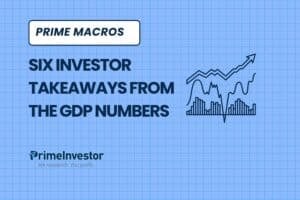Prime Funds is our list of recommendations in equity, debt, and hybrid mutual funds that are worth investing in. Prime Funds narrows down your choices from the thousands of funds that there are into a concise list of funds that span different styles. Prime Funds are selected based on performance, portfolios, and investment strategies.

In this review, we have made a few changes in equity Prime Funds and the debt Prime Funds. Please go through the report in detail to know the changes and the rationale.
About Prime Funds
Prime Funds is our list of best mutual funds across the equity, debt, and hybrid categories. We use Prime Ratings, our fund ratings, as a first filter. We then apply qualitative analysis to arrive at our fund recommendations. Prime Funds is an enduring list of funds that you can use at any time. You will always find a fund to meet any goal you’re looking to meet.
Different categories: Prime Funds are separated into buckets, based on risk level in equity & hybrid funds and timeframe in debt funds. Each of these draws from different SEBI-defined categories. We have classified them in a more user-friendly way than using the several dozens of SEBI categories. We do not go only by Prime Ratings but look at other factors as well to narrow the list and make the choices easy for you.
Different styles: In Prime Funds, we’ve aimed at providing funds that follow different strategies for you to mix styles and diversify your portfolio with ease. The ‘Why this fund’ for each Prime Fund will brief its strategy, why we picked it, and how to use it in your portfolio.
Direct plans: We have specifically given the direct plans in Prime Funds. If you wish to know whether it is ok for you to use the regular plan of the fund, check Portfolio Review Pro periodically to know if you are with expensive regular plans.
Quarterly review: Our aim in reviewing the Prime Funds list every quarter is to ensure that we don’t miss any good opportunities that are coming up and we are not holding on to funds that are slipping. When we remove funds from the Prime Funds list, we tell you exactly what to do if you have invested in these funds. Funds we remove do not immediately call for a sell – it is just that they have slipped in performance marginally or there are better alternatives now. Unless our review tool says such funds are a ‘sell’, you can hold them (refer to our article on when to sell funds)
Using Prime Funds: You don’t need to hold every Prime Fund nor add every new fund we introduce to the list. Unless it fits your overall portfolio/strategy, or there is something lacking, there is little need for you to go on adding funds. Our idea of covering them in detail through some of our calls is to let you know the strategy, style, and suitability in different portfolios. It is not a specific call to buy right away, unless we mention that it is a ‘tactical’ or ‘timing’ call. If you need to build a portfolio using Prime Funds, use our Build Your Own Portfolio tool to make this easy for you.
Equity
The past quarter has seen equity markets quickly recover lost ground, across the board. The pullback had begun to set in at the time of our March quarter review, with indices hitting lows in March 2025. FII buying activity started returning in March and they have remained net buyers in the past two months.
Of course, the past quarter has been quite eventful. First was the start-stop-start story on tariffs imposed by the US; it’s still entirely uncertain on what the final tariff structure will be. Then there were bouts of geopolitical tensions. But apart from brief reactions, markets have remained upbeat.
Since the peak in September 2024, the Nifty lost close to 15% while the Midcap 150 and the Smallcap 250 sank over 20%. But with the broad market comeback staged in the past quarter, indices are very close to these peaks already. Since the March low, the Nifty has rebounded 16%. The Nifty Midcap 150 was up a good 23.8% and the Nifty Smallcap 250 rose 28.7%. The sharp mid-and-smallcap sell off both brought in some measure of reality check for the very aggressive equity funds, while providing buying opportunities for the quality and valuation-conscious.
In the Prime Funds, we have always preferred funds with an ability to contain downsides well, even if they are not chart toppers on the upside. We also prefer funds that show consistency in performance across market cycles and a stable strategy, when it comes to the main Moderate & Aggressive Prime Funds categories. This approach has paid off, with our funds navigating these turbulent markets well.
Therefore, we have not made much change in Prime Funds this quarter. Our changes are to introduce two new high-return opportunities with recovery setting in and to complement the moderate-risk largecap segment.
Equity – Aggressive
In this Prime Funds set, we are adding a new smallcap fund – Tata Smallcap. This fund has been among the top-rated in the smallcap category.
We had been cautious about it owing to its comparatively shorter track record that had not gone through market cycles, and a bout of underperformance last year. However, the fund has bounced back well and the uneven markets over the past two years have provided a good yardstick to judge its ability to outperform.
The fund beat its category average almost all the time over a rolling 3-year basis. While its consistency in shorter-term periods is less stellar, this is partly owing to underperformance in 2024 when the smallcap rally was at its headiest, and the fund booked profits in several holdings. The fund has steadily beaten both index and category in 1-year periods for several months now. Tata Smallcap does a good job in keeping downsides contained. This, along with lower volatility, helps the fund clock among the highest risk-adjusted returns in the smallcap category.
The fund follows a growth-at-reasonable approach, looking for fundamentally sound businesses that can grow earnings over the medium term. As with most smallcap funds, it follows a bottom-up approach. It tends towards a buy-and-hold strategy and holds among the lowest portfolio churn in its category.
Entry: This fund can form part of the aggressive component in long-term portfolios. Owing to its low overlap with the other two smallcap funds in this set (Nippon India Smallcap & HDFC Smallcap), it can be paired with these funds as well, for a more diversified smallcap exposure. Use SIPs for any fresh exposure.
Equity – High Risk Turnaround
In this set, we are adding WhiteOak Capital Special Opportunities fund. With a history of just over 1 year, this addition is a departure from our normal criteria for determining Prime Funds!
We are adding it in this High Risk category owing to its unique portfolio and outstanding performance compared to other multi-cap equity funds and other special opportunities funds. The fund falls into the thematic equity category, and aims to invest in companies experiencing “special situations” such as corporate restructuring, regulatory changes, tech disruption, emerging trends, or temporary challenges.
It invests across market capitalisation but has a heavy mid-and-smallcap allocation of about half its portfolio. The fund adopts a bottom-up strategy, which is necessary given its theme. Its current portfolio represents a diverse mix of sectors.
In current markets, where cycles are getting shorter, valuations pricey in several pockets, and sector preference shifts are more dynamic, such a strategy can help identify high-return stocks earlier on. Waiting for a track to fully establish itself may mean losing out on these higher-return opportunities.
The fund’s overlap with other special opportunities themes or even multicap funds is very low; compared to Kotak Multicap, for example, which is in the Equity Aggressive category, the fund has a 13% overlap. Compared to Franklin India Opportunities, also in Prime Funds, its overlap is 20%.
Entry: The fund is suitable only for aggressive, high risk investors. Keep allocations limited, due its high risk – both from nature of strategy and the lack of a performance record. We may take active calls to suggest book profit on this fund. This fund should be viewed as a tactical play on which we may change our call if performance suffers. Use SIPs if you want to enter now.
Debt
Duration funds and medium-term funds that invested in long term government and PSU bonds reached 10-11% 1-year returns just before the MPC meeting last month. However, this return started tapering off post rate cut. We had written in detail on why your debt fund NAVs fell despite the rate cut. Going forward, with the market already factoring in lower yields, returns from debt funds are likely to reduce. With not much capital appreciation opportunities, returns can be expected to align more closely with portfolio yields after expenses.
Accrual-focused funds like corporate bond and PSU funds will also see moderated returns as duration gains from their 3-5 year portfolios diminish. Funds that benefited from high short-term rates through low-maturity strategies will see returns fall as rates decline and portfolios get reinvested at lower yields. However, these accrual funds should still outperform duration funds with lower volatility, delivering returns closer to their portfolio yields minus expenses.
In this review, we are therefore looking at accrual funds in the short and medium term that can provide you with relatively better yields.
Debt funds – very short term – 3 months to 1.5 years
In this set, we are removing Kotak Money Market. This fund continues to be a steady performer and is at par with money market funds. However, we rate this category along with low duration, ultra short and money market funds. Among these larger set of peers, this fund sports a marginally lower yield than category average. With reducing rates, we are therefore forced to look for better bets to keep your overall portfolio returns decent. We are moving this fund to a hold.
We are instead adding Nippon India Ultra Short Duration. With very marginal credit risk (papers rated below AA+) of under 8%, this fund sports a yield of close to 7%, thus making it a superior choice in this set now. Its rolling 1-year return average is also comfortably higher than peers, at around 7%.
Action to take: You can continue to hold Kotak Money Market and avoid any fresh exposure. Any additional investment for the short term can be invested in the Nippon fund. However, ensure that you do not go overboard in your exposure considering the marginal credit risk.
Debt funds – Short term 1.5- 3 years
In this set we have removed SBI Floating Rate Debt. As a category, floating rate funds have started seeing decline in returns as their yields adjust more quickly to the lower return scenario (as they hold floating rate instruments). As a result, we are limiting the number of floating rate funds we have and are sticking to plain vanilla accrual funds with higher yields.
Action to take: You can continue to hold SBI Floating Rate Debt and avoid any fresh exposure. Any additional investment for the short term can be invested in the other short duration funds in this category.
Debt funds – Medium term 3-5 years
For this category, we anticipate that corporate bond spreads will narrow soon (it already has since our call on corporate bond funds in April 2025) making it essential to target funds offering relatively higher yields. Although our previous strategy advised against aggressive credit risk exposure—such as heavily investing in low-rated bonds—we’ve identified opportunities in medium-duration funds that carry moderate credit risk. This approach allows us to enhance yield generation while maintaining a balanced risk profile in the current market environment.
We have therefore added ICICI Prudential Medium Term Bond to this set. This fund holds little over a third in instruments below AA+. However, it has a sound track record of navigating the credit space well, keeping risk balanced. With YTM at 7.62% and an average maturity of 5.4 years, this fund can help improve long-term returns in your debt portfolio.
Entry: You can use lumpsum mode or SIP (preferably lumpsum now) to invest in this fund. However, exposure must be kept limited at not more than 10% of your portfolio to ensure risks are not enhanced.
Prime ETFs
Prime ETFs is our list of recommended ETFs in equity, debt, and gold. We look at multiple factors to draw up this list, ranging from short-term and long-term tracking error, expense ratio, trading volumes and usefulness of the index in a portfolio.
In this review, we are removing a few ETFs as follows:
Strategy & thematic
In this Prime ETFs set, we are removing Mirae Asset S&P 500 Top 50 ETF. This ETF has long been part of Prime ETFs. In these times where most international funds have restricted inflows, it provided a good option for international exposure.
These international ETFs have always seen deviations in market price and underlying NAV. But these are usually short-lived and resolve in a few months. For this ETF, though, market prices (the price at which you would buy the ETF) have been much higher than the underlying NAV for close to 6-7 months now. The deviations show no signs of reducing. This has been the case since RBI’s restriction on fresh creation of units (new AUM).
In such a situation, making additional investments at these higher error levels is avoidable. We will track the error and may reintroduce the ETF if reduced.
Action to take: Avoid making additional investments in the ETF. Retain investments made so far and do not exit.
Debt & Gold
In this Prime ETFs set, we are removing both the debt ETFs – Bharat Bond ETF April 2030 and Bharat Bond ETF April 2031. As mentioned in our section on Debt above, the focus now should be on locking into higher yields and moderation in returns from a duration play.
Both these ETFs have current YTMs of 6.6-6.7%, with a residual maturity period of 5-6 years. For such a timeframe, these are not attractive levels to lock into for fresh investments and gains through capital appreciation will also be limited. Therefore, for any fresh investments, the mutual fund route (see Prime Funds Debt – Medium Term 3-5 years) would be the better option. We could not identify other debt ETFs with reasonable volumes and better yields to provide as alternatives.
Action to take: Avoid making additional investments in the ETF. Retain investments made so far and do not exit, if you wish to hold to maturity. If you have invested in these funds for tactical purposes to play duration, you may book profits if you are sitting on gains.
Prime Portfolios
In this review, we have made no changes to any Prime Portfolio. You can continue investing through SIPs/lumpsum as you were before and there is no action that you will need to take.
You can view the full list of Prime Funds here.
You can view the full list of Prime ETFs here.
You can view the full list of Prime Portfolios here.




6 thoughts on “Quarterly review – Changes to Prime Funds, Prime ETFs & Prime Portfolios”
Tata smallcap is closed for lumpsum one time purchase. Is this normal and do they reopen.
What would be the right strategy to enter the fund, only through SIPs?
Yes, most of them with reasonabel AUM are closed for lumpsums. SIP is the only choice.
ICICI Medium Term Debt Fund, although it has 7.62% YTM, direct expense ratio is 0.74%. Is it still worth buying considering the expense ratio?
Yes, we have considered the expense. Returns net of this expense is higher than peers as the yield is still far higher than corporate bond peers (for the extra risk that is). As mentioned, buy through direct and cap exposure.
Hi,
I have invested in HDFC Floating rate fund. Should I sell that and invest in corporate bond/medium term fund? I dont need the money for the next 7 years. Please advise. Thank you.
No, you can remain invested in the fund. – thanks, Bhavana